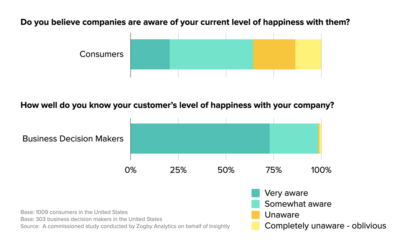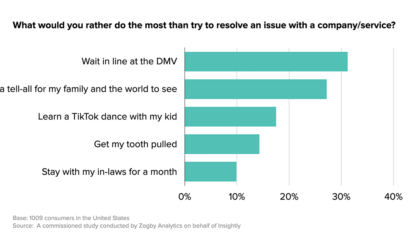In 1995, the Pennsylvania Department of Transportation (DoT) commissioned a Penn State professor to understand how the state’s residents perceived the organization and to identify the drivers of residents’ satisfaction. The results were interesting, if not terribly surprising. It didn’t matter how friendly the state’s workers were or how easy it was to get in touch with agency employees. What mattered most were two key DoT functions: pothole repair and snow removal.
The relationship between taxpayer and government agency certainly differs from that between customer and corporation, but this study underlines an often unspoken point: Customers spend money because they’re trying to get something done — and companies must focus on providing that utility. In other words, they need to make themselves useful.
Usefulness is as important today as it was in 1995. In fact, it’s one of three core pillars of great customer experiences. But unfortunately, it remains an elusive concept for several reasons.
The first is that we tend to get blinded by bright shiny objects, and that often leads us to take a tech-first approach. The meteoric adoption of iOS and Android devices over the past several years is a great example. Marketers across the planet have swarmed digital design firms to develop mobile and tablet apps for their brands, but are often at a loss for words when confronted with questions like “What’s the purpose of the app?” or “What should it do?”
The second reason is that we’ve become slaves to quarterly numbers. With public and private investors watching our launch dates and immediate revenue, short-term thinking sets in and we start cutting corners. The website Everyone Deserves Great Design details several products with noble social missions—like a prosthetic hand and an electricity-generating soccer ball—that sound good in theory, but simply don’t provide much utility to the user. Because of they way they were designed and produced, the prosthetic hand can barely lift five pounds and the ball breaks after a few weeks. The site cautions: “Don’t waste time and money making a bad product that no one wants!” However, I’d argue that these products fall short because of a lack of proper investment—not because the solutions themselves weren’t desired.
But lack of understanding of what customers need and want is, in fact, an issue that adversely affects many of today’s products, services, and experiences. I’ve written in the past about the danger of making assumptions about your customers. And yet, we see it happen in every industry. Several years ago, JC Penney disastrously assumed that its customers would want everyday low prices instead of coupons and sales. And United Airlines wrote in its June 2013 inflight magazine, “We’ve listened to what our customers want, and we are installing technology at our airports to help speed you through. For example, at our hub in Houston, customers can quickly and easily tag their own bags for check-in…” Huh? Since when do travelers want to tag their own bags?!
To understand what your customers really need and want, you need to do the hard work of qualitative customer research—visiting their homes (or wherever it is that they do business with you), talking with them, and observing their behavior. Only when you’re armed with that data can you hope to be truly useful to your customers.
As I mentioned above, usefulness is just one of three core pillars that you need to focus on in order to create experiences that matter. I’ll talk about the second pillar—ease of use—in my next post.




